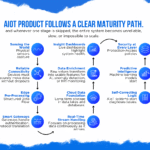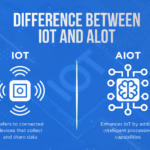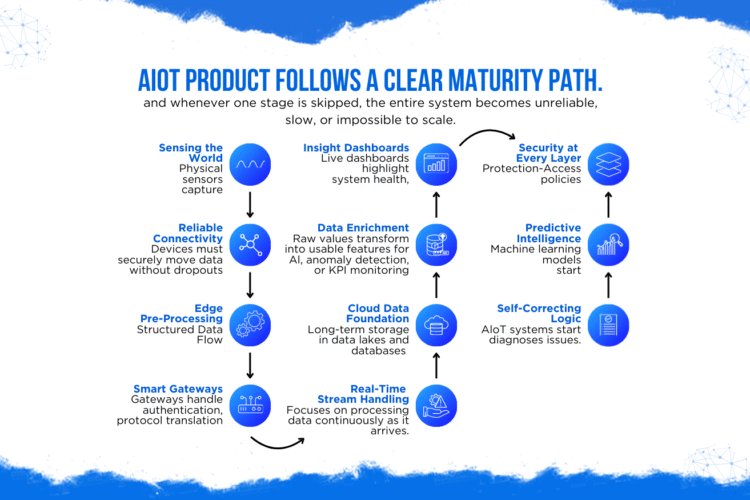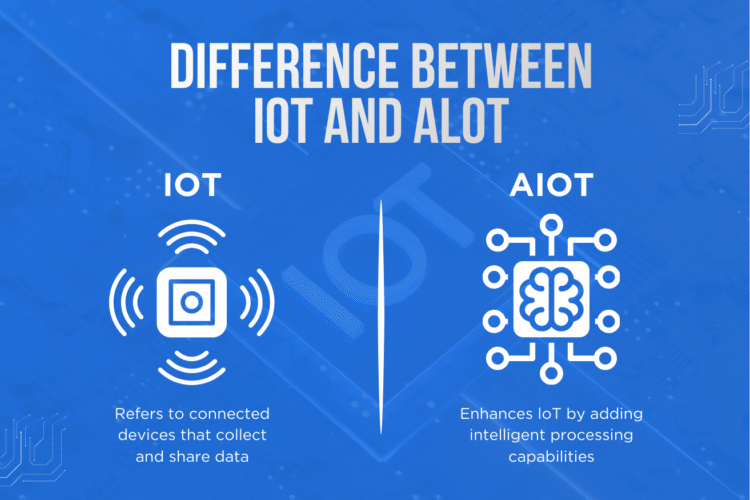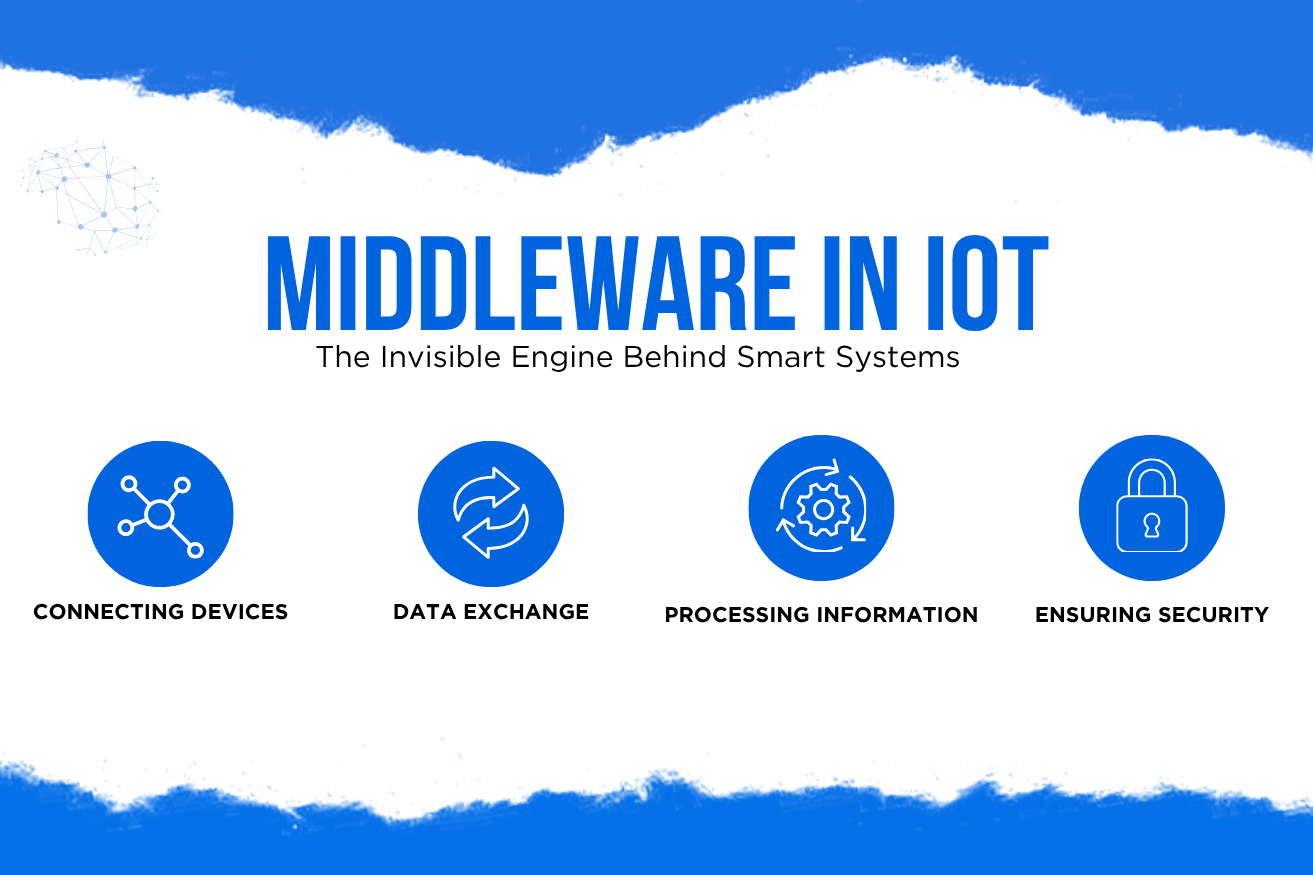
Introduction
When we think of the Internet of Things (IoT), most of us focus on devices, sensors, and applications. But there’s a critical hidden layer that makes everything work seamlessly: Middleware in IoT.This invisible backbone connects devices, manages data, and ensures applications can function efficiently without worrying about the complexity of hardware and communication protocols.
In this article, we’ll explore what middleware in IoT is, why it matters, the technologies behind it, and real-world middleware examples in software.
What is Middleware in IoT?
Middleware in IoT refers to the software layer that sits between IoT devices (sensors, actuators, gateways) and the applications that use their data. It provides services such as communication, device management, data processing, and security.
Think of it as a translator and coordinator: it hides the complexity of hardware and network protocols, offering developers a clean interface to build IoT applications.
Middleware Definition
In simple terms, middleware is software that enables different systems, applications, or devices to communicate and work together. In the context of IoT, middleware ensures that heterogeneous devices can exchange data seamlessly, even if they run on different platforms.
Why Middleware for IoT is Important
IoT is inherently complex:
- Devices run on different operating systems.
- Networks vary (Wi-Fi, Zigbee, LoRa, BLE, 5G).
- Data formats are inconsistent.
Without middleware for Internet of Things, developers would need to manage every detail of device communication and data integration. Middleware simplifies this by:
- Standardizing communication (using MQTT, CoAP, HTTP).
- Providing scalability for millions of connected devices.
- Enabling security through authentication and encryption.
- Offering APIs for faster application development.
Key Functions of Middleware in IoT
- Connectivity Management: Manages protocols like MQTT, CoAP, AMQP, or HTTP, ensuring devices can talk to servers and each other reliably.
- Data Collection & Processing: Aggregates sensor data, performs filtering, and pre-processes it before sending it to the cloud or edge applications.
- Device Management: Handles firmware updates, health monitoring, onboarding, and remote control.
- Security & Authentication: Implements encryption, user/device authentication, and secure data transfer.
- Application Integration: Provides APIs and SDKs to allow developers to integrate IoT data into business applications, dashboards, or AI pipelines.
Middleware Examples in Software
There are many software middleware examples in IoT today. Some are commercial solutions, others open-source:
- Eclipse Kura – open-source IoT middleware for gateways.
- FIWARE – platform for smart cities and industry applications.
- Microsoft Azure IoT Hub – cloud middleware for connecting IoT devices to Azure services.
- AWS IoT Core – manages communication between IoT devices and AWS cloud.
- Google Cloud IoT Core (retired in 2023, but a classic middleware service).
These examples highlight how middleware IoT platforms reduce complexity and provide ready-to-use tools for building scalable solutions.
List of Middleware Technologies for IoT
Here are some widely used middleware for IoT technologies that businesses rely on:
- Message Brokers: MQTT, RabbitMQ, Kafka
- Edge Middleware: EdgeX Foundry, Kura
- Cloud Middleware: AWS IoT Core, Azure IoT Hub, Google IoT
- Industry-Specific Middleware: Siemens MindSphere, PTC ThingWorx
Future of Middleware in IoT
The next wave of middleware technologies will focus on:
- AI integration for smarter data analytics at the edge.
- 5G-enabled middleware for ultra-low latency applications.
- Cross-industry interoperability to support healthcare, smart cities, industrial IoT, and automotive use cases.
As IoT networks expand, middleware will be the key to ensuring scalability, security, and intelligence.
Conclusion
Middleware in IoT is the unsung hero that powers connected ecosystems. By simplifying device management, standardizing communication, and enabling secure, scalable solutions, it forms the backbone of IoT innovation.
Whether you’re building a smart home, an industrial system, or a city-wide network, choosing the right middleware can mean the difference between a prototype and a production-ready solution.
At MetaDesk Global, we specialize in end-to-end IoT solutions — from firmware to PCB, cloud, and middleware integration. If you’re exploring middleware for Internet of Things projects, we’d love to help you build a scalable and secure system.

